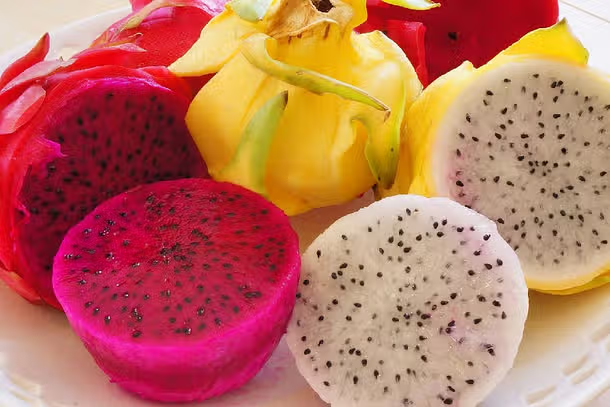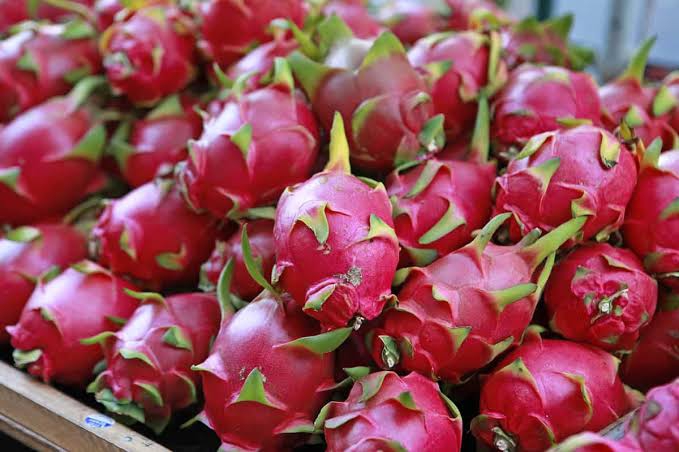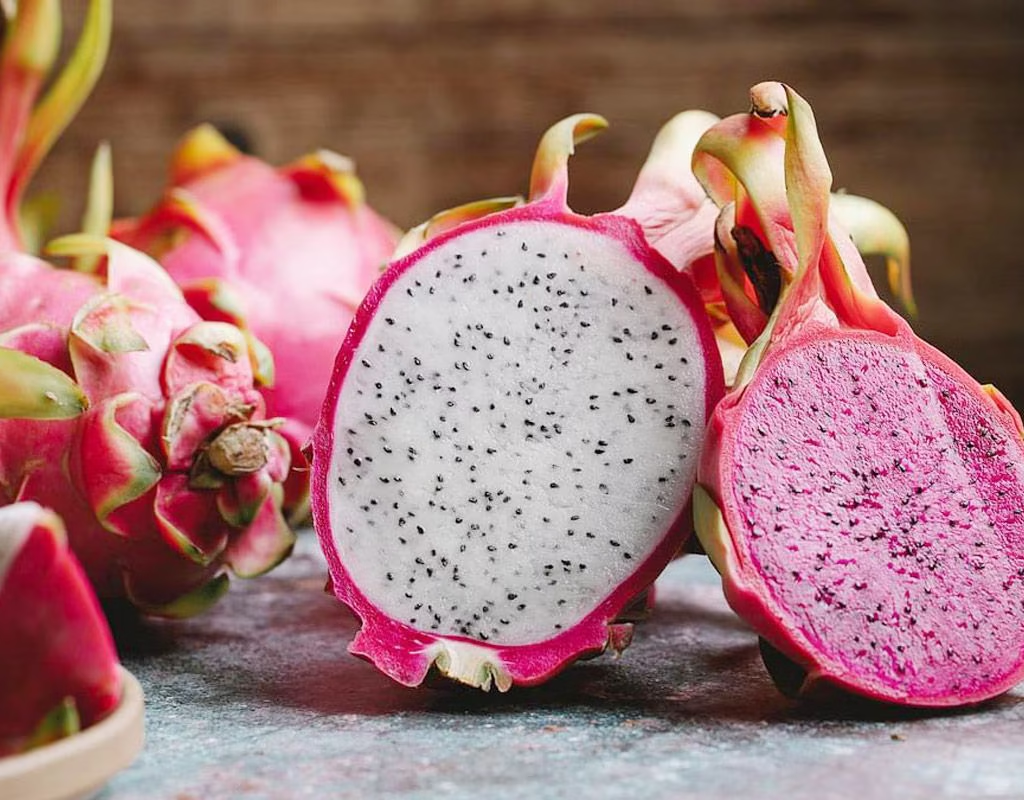Dragon fruit — also known as pitaya — is one of the most exotic and visually striking fruits you can find. With its vibrant pink or yellow skin, speckled flesh, and refreshing flavor, dragon fruit has captured the attention of health enthusiasts, chefs, and fruit lovers globally. Beyond its aesthetic appeal, it offers numerous health benefits, being rich in antioxidants, fiber, vitamins, and minerals.
As international demand for tropical and exotic fruits rises, several countries have stepped up to become major producers of dragon fruit. While one nation firmly leads the pack, others are rapidly expanding their cultivation to meet growing global demand.
In this article, we explore the Top 5 Dragon Fruit Producing Countries in the World — examining their production volumes, export capabilities, growing regions, and unique contributions to the global market.
1 Vietnam — The Undisputed Leader

Annual Production: Approx. 1.3 million metric tons
Global Market Share: Over 50% of total world production
Major Growing Regions:
- Bình Thuận (dragon fruit capital of Vietnam)
- Long An
- Tiền Giang
Vietnam is, without question, the world’s top producer of dragon fruit. The country’s tropical climate, fertile soil, and skilled farmers have turned it into the global dragon fruit capital.
The country primarily grows:
- White-fleshed pitaya (Hylocereus undatus)
- Red-fleshed pitaya (Hylocereus costaricensis)
Vietnam has pioneered LED lighting systems in orchards, which allow farmers to stimulate off-season flowering and achieve year-round harvests. Its robust export infrastructure ensures that fresh dragon fruit reaches markets like China, India, the Middle East, Europe, and the United States.
Why Vietnam Leads:
- Ideal climate for tropical fruit farming
- High-quality export standards (GlobalGAP, VietGAP)
- Innovation in year-round cultivation
- Over 85% of its produce is exported globally
2 China — Rapidly Expanding Production
Annual Production: Approx. 650,000–700,000 metric tons
Key Provinces: Guangxi, Guangdong, Hainan, Fujian
China, although historically a major importer of dragon fruit, has rapidly increased its domestic cultivation over the last decade. Favorable tropical and subtropical regions in southern China have proven ideal for dragon fruit farming.
The majority of Chinese dragon fruit farms produce white-fleshed varieties, though red-fleshed varieties are also gaining popularity.
Export & Import:
- China remains Vietnam’s biggest export market
- Domestic demand continues to grow rapidly, supporting both local production and imports
Notable:
China uses modern trellis systems and controlled lighting techniques to extend the harvest season, mirroring Vietnam’s strategies.
3 Thailand — Southeast Asia’s Dragon Fruit Hub

Annual Production: Approx. 220,000–250,000 metric tons
Key Regions: Nakhon Ratchasima, Prachinburi, Phetchabun
Thailand has long been a significant producer of tropical fruits, including dragon fruit. While it may not rival Vietnam in output, its dragon fruit industry is well-established and continues to thrive, especially with increasing local and international demand.
Thai farmers cultivate:
- White-fleshed dragon fruit
- Red-fleshed varieties
- Occasional yellow-skinned types
Export Markets:
- China
- Malaysia
- Singapore
- Middle Eastern nations
Thailand’s proximity to international trade hubs and strong agricultural infrastructure support its position in the top five.
4 Ecuador — The Leader in Yellow Dragon Fruit

Annual Production: Approx. 45,000–50,000 metric tons
Key Region: Palora, Morona Santiago Province
Ecuador has carved out a niche in the dragon fruit market by specializing in the yellow-skinned, white-fleshed variety (Hylocereus megalanthus). The country’s Amazon and Andean foothills provide excellent growing conditions for this sought-after, sweet variety.
Export Focus:
- United States
- Canada
- European Union (Germany, Netherlands)
- Middle East
Ecuador’s yellow dragon fruits are prized for their intense sweetness and delicate flavor, and they are often sold at premium prices in export markets.
Notable:
Ecuador places a strong emphasis on organic and sustainable farming practices, making its produce especially popular in health-conscious and organic markets.
5 India — An Emerging Producer on the Rise

Annual Production: Approx. 30,000–35,000 metric tons
Key Growing States:
- Maharashtra
- Karnataka
- Gujarat
- Andhra Pradesh
- Tamil Nadu
India is a relative newcomer to commercial dragon fruit production but has experienced rapid growth in recent years. The government has actively promoted dragon fruit cultivation under the ‘Mission for Integrated Development of Horticulture (MIDH)’ scheme.
Both white-fleshed and red-fleshed varieties are grown, and Indian farmers are beginning to experiment with yellow-skinned types as well.
Growing Demand:
Dragon fruit’s popularity is rising in India due to its perceived health benefits and exotic appeal, with domestic markets in major cities driving consumption.
Future Outlook:
India plans to expand its dragon fruit cultivation area to 50,000 hectares by 2028, aiming to reduce imports and establish itself as a key exporter to Middle Eastern and Southeast Asian markets.
Honorable Mentions
Several other countries contribute to the global dragon fruit market, though on a smaller scale:
- Israel: Produces high-quality, organic pitaya for European markets
- Philippines: Steadily increasing domestic production
- Malaysia: Known for its red-fleshed varieties
- Australia: Small, high-value organic market
- United States (California, Florida, Hawaii): Limited commercial farms catering to domestic niche markets
Why Is Dragon Fruit Production Expanding Globally?

The surge in dragon fruit cultivation worldwide can be attributed to:
- Rising health awareness: High in antioxidants, fiber, vitamin C, and iron
- Growing demand for exotic superfoods
- Attractive export potential due to high market prices
- Adaptability to various tropical and subtropical climates
Additionally, the visually appealing nature of dragon fruit and its use in gourmet dishes, smoothies, desserts, and health products have fueled global consumer interest.
Conclusion
So, who leads the world in dragon fruit production?
Vietnam firmly holds the top spot, followed by rapidly expanding producers like China, Thailand, Ecuador, and India. Each country has developed its niche within this vibrant market, whether through volume production, specialty varieties, or organic farming.
As global demand for dragon fruit continues to rise, especially in health-conscious and premium fruit markets, these top five countries are set to play even greater roles in the international trade of this fascinating tropical fruit.



